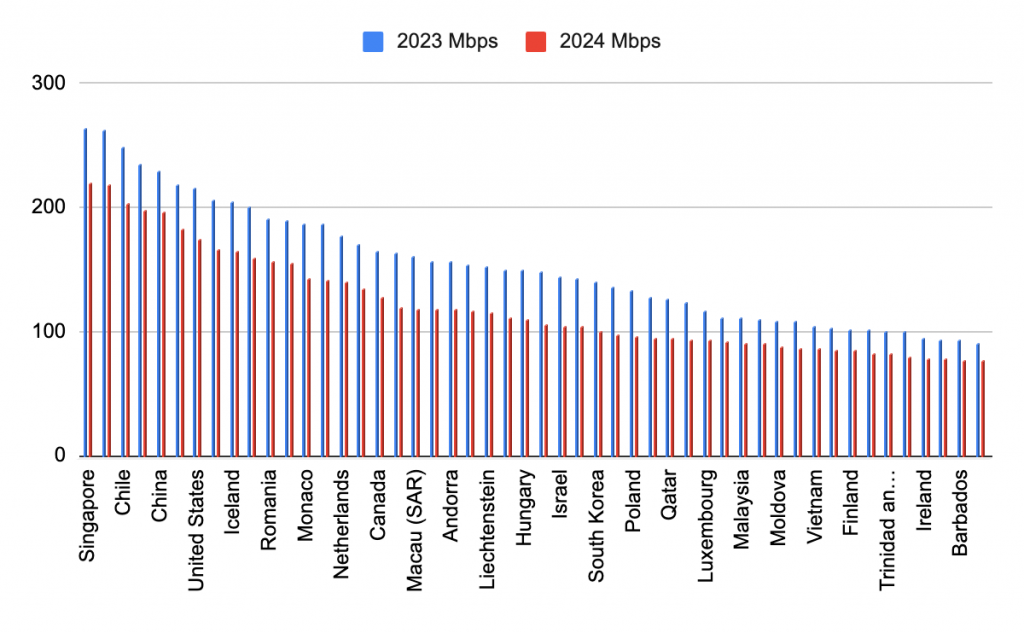Enable yourself to get better understanding and control of your Teltonika networking solution’s performance with wireless connection support display RSSI and RSRP signal strength.
Familiarising yourself with RSSI and RSRP metrics wireless network support will help to enhance your Teltonika Networks next steps.
Wireless Networks are the preferred choice for IoT connectivity
When it comes to IoT (internet of things) applications, wired connections once held dominance. But it is becoming increasingly evident that the preferred choice for IoT connectivity is wireless networking.
The wireless connectivity market is expected to continue to grow at a compound annual growth rate of 12.8% in the next 3 years, solidifying the trend of networking solutions becoming increasingly dependent on Wi-Fi or mobile networks.
Due to the versatility and convenience offered by wireless connectivity, this doesn’t come as much of a surprise.
Without the limitations of wiring, network devices can be configured, monitored and managed remotely – Even if they’re in a different city, country or continent.
The benefits of using a wireless connection are indisputable.
What are the primary connectivity options?
There are 2 primary choices when it comes to wireless connectivity: Wi-Fi and mobile technology.
Wi-Fi
- Operates on the IEEE 802.11 standard
- Supports multiple protocols including 802.11a, 802.11b, 802.11g, 802.11n and 802.11ac (determining the connection’s speed and range)
Mobile Technologies
- Have evolved from 3G to 4G to 5G
- Each defines the connection’s speed and capacity available to users and end devices
RSSI and RSRP
Whether your network device operates on Wi-Fi or mobile technologies, if you’re checking out your network then you’ll likely come across RSSI and RSRP metrics. These metrics are vital for displaying the strength and power of your connection.
What is RSSI, what does it do and how is it measured?
- RSSI stands for Received Signal Strength Indicator.
- At the moment radio frequency power and quality reaches the receiver, it’s measured by RSSI. For example, a network device or antenna.
- RSSI can be used to gauge the strength of the signal in any wireless system, it’s not exclusive to any one type of wireless technology.
- Whether you’re using Wi-Fi or mobile technologies, RSSI can provide signal strength data across different types of radio frequency communications.
- This means that RSSI can be a good indicator of whether your network devices have robust connectivity.
- RSSI signal strength is measured in negative values, with stronger, higher quality signal values being closest to zero.
- NOTE: RSSI values are not standardised across industries, so bear this in mind when interpreting network data for devices manufactured by different companies.
What is RSRP?
- RSRP stands for Reference Signal Received Power and is measured in negative values.
- RSRP is particularly relevant for mobile technology network solutions like 4G and 5G.
- It is a type of RSSI measurement, but used to measure the power of mobile signals spread over full bandwidth and narrowband.
- RSRP measurements can help you to see your network’s overall signal coverage and capacity across all frequencies used for your networking solutions by measuring across the full bandwidth.
- The quality of your connection in specific frequency ranges can be assessed by measuring RSRP over a narrowband. This can be used to troubleshoot specific issues that could affect signal quality as well as optimising network performance.
- By using the RSRP signal strength, you can determine a more precise measurement of the cellular connectivity that your network receiver obtains. Having this information can enable you to make informed decision about your network infrastructure as well as Quality of Service Assessments and further improvements.
- NOTE: Just as with RSSI, the RSRP signal strength can differ by manufacturer.
Your Teltonika Network
Both RSSI and RSRP signal strength indicators are displayed for Teltonika Network devices enabled with Wi-Fi or mobile connectivity devices.
The display of these metrics can be accessed via RutOS. The latest 7.06 version of RutOS has enhanced data visualisation capabilities for mobile connections.
For help with your Teltonika Network, get in touch with our Wi-Fi experts today. Our professional wireless network engineers can help with both Wi-Fi networks and mobile connectivity.
We can also help with alternative networks other than Teltonika.














